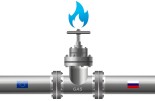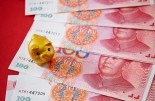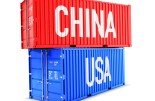Swissquote Bank: Chinese reopening story is not all rosy.
Swissquote Bank: Chinese reopening story is not all rosy.

By Ipek Ozkardeskaya, Senior Analyst
Yesterday, Russia finally responded to the EU’s price cap on its oil exports, saying that they will simply stop exporting their oil to parties that ‘directly or indirectly use the mechanism of setting a price cap’.
The Russian oil export ban will reportedly last at least until July 2023. Fair enough. The latter announcement gave a minor boost to crude oil yesterday, but the barrel of American crude remained offered into the 50-DMA, near $81.60pb, and the price is back below the $80pb this morning. Why? Because most countries that are pointed by Putin’s finger have already stopped majority of oil imports from Russia. Plus, the Russian crude is already trading below the $60pb price cap - meaning that there is no direct implication on the Russian supply – at least in the immediate future.
The country produces around 10 mio barrels per day, although the Russian Prime Minister said that the output may fall by 500’000 to 700’000 barrels a day early next year, which would be around 5-6% of the current production. BUT, an eventual decrease in Russian oil supply gives support to the oil bulls’ in the medium rub. Other factors like Chinese reopening, and the cold weather in America should also help throw a floor under a further selloff in oil, and even encourage a rise above the 50-DMA, and toward the $88pb target.
Chinese reopening story is not all rosy.
If the Chinese reopening story is positive for oil and commodity prices - and for the massively battered Chinese stocks, it’s bad news for global inflation. This is why we don’t see the US stocks gain on China reopening news, but we rather see them under a decent pressure, as the surge in Chinese demand will certainly boost inflation through higher energy and commodity prices. And in response to higher inflation, the central banks will continue hiking rates. And the stronger the positive impact on growth from Chinese reopening, the faster the global inflation, and the faster the global inflation the more aggressive the central bank actions will be. The 10-year yield jumped 2.5% yesterday to above 3.85% and the German 10-year yield spiked more than 4.50% to above 2.50%. The rising global yields gave some support to the US dollar yesterday, but gains in greenback remained limited at some places. The EURUSD for example was flat to slightly positive as the European Central Bank 8ECB) hawks didn’t let the Federal Reserve (Fed) hawks take the upper hand. Gold rallied $33 per ounce, to $1833, defying the rising US yields, while the Aussie-dollar pushed higher as well, parallel to the positive pressure in iron ore futures thanks to the improved prospects of Chinese demand.
Nevertheless, the Chinese reopening story doesn’t do good to sentiment in stock markets. The S&P500 slid 0.40% yesterday, where gains in energy stocks helped temper headwinds in rate-sensitive technology stocks, while Nasdaq, which is plenty of tech stocks, slumped 1.50% yesterday, and is certainly headed toward the next bearish target that stands at 10’200. And the overall bearish sentiment, and endless news about FTX Sam Bankman Fried, which also raises concerns regarding the financial health of other cryptocurrency companies, pushed Bitcoin under the $17K mark, again. And besides the global macro headwinds, and the sector-specific worries, there is also a growing headache regarding the impact of current price action on mining activities. Bitcoin’s hash rate has been falling sharply since the FTX collapse, as some miners default under the pressure of globally squeezed margins.









